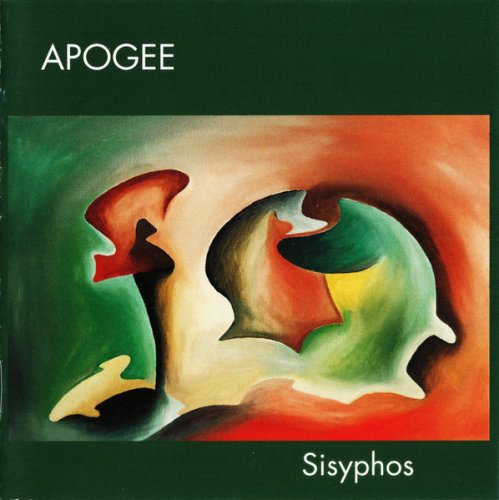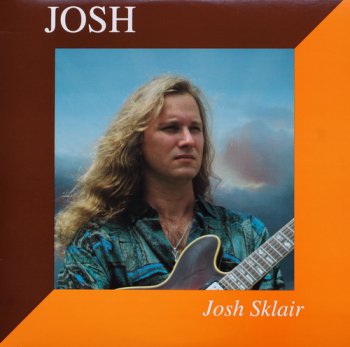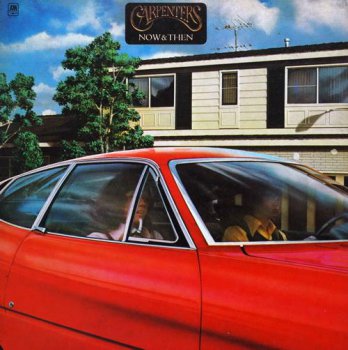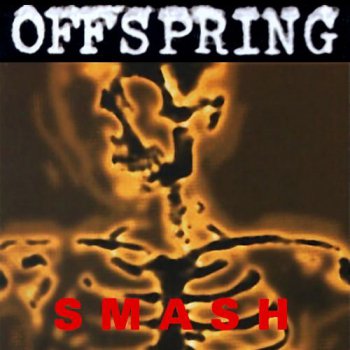Ozric Tentacles – Vitamin Enhanced (1994)
Band: Ozric Tentacles Country: United Kingdom Album: Vitamin Enhanced (Box set 6 CD 006202) Genre: Space Rock, Psychedelic, Instrumental Publisher: Dovetail (DOVE BOX 1) Quality: FLAC (image. cue. log. Full scans) Size: 2.3 Gb Sharing: X-files

Ozric Tentacles – Vitamin Enhanced (1994)
Band: Ozric Tentacles Country: United Kingdom Album: Vitamin Enhanced (Box set 6 CD 006202) Genre: Space Rock, Psychedelic, Instrumental Publisher: Dovetail (DOVE BOX 1) Quality: FLAC (image. cue. log. Full scans) Size: 2.3 Gb Sharing: X-files
15 10, 2025
Wilson Pickett - Funky Midnight Mover - The Atlantic Studio Recordings 1962-1978 (2010) 6CD

Wilson Pickett - Funky Midnight Mover - The Atlantic Studio Recordings 1962-1978 (2010) 6CD
Artist: Wilson Pickett Title Of Album: Funky Midnight Mover Year Of Release: 2010 Label (Catalog#) :Rhino Handmade RHM2 07753 Country:: USA Genre: Funk, Soul, R&B Quality: FLAC (tracks+cue,log) Bitrate: Lossless Time: 07:43:54 Full Size: 3.65Gb(+3%)(covers+book/92page) Info: wiki
14 10, 2025
Apogee - Sisyphos (1998)(2006)

Apogee - Sisyphos (1998)(2006)
Artist: Apogee Title Of Album: Sisyphos Year Of Release: 1998/2006 Label (Catalog#) : Musea / MALS MALS 105 Country:: Germany Genre: Prog Rock, Crossover Prog Quality: WavPac (*image + .cue,log) Bitrate: Lossless Time: 63:52 Full Size: 534Mb(+3%)(covers) Info: progarchives Upload: xfile.cloud
14 10, 2025
Жанры
Lossless Galaxy Release
Русская музыка
--Поп
--Рок
--Панк
--Альтернатива
--Металл
--Рэп, Хип-Хоп, R'n'B
--Джаз и Блюз
--Фолк
--Шансон, Авторская песня
--СССР
Зарубежная музыка
--Pop
--Rock
--Hard Rock
--Progressive & Art-Rock
--Pop-Rock & Soft Rock
--Instrumental Rock
--Heavy, Traditional, Industrial Metal
--Power, Gothic, Sympho Metal
--Thrash, Speed, Groove, Modern Metal
--Death, Melodic Death, Doom, Dark Metal
--Black, Pagan, Folk, Viking Metal
--Alternative
--Punk
--Disco, Eurodance
--Rap, Hip Hop, R'n'B
--Reggae, Ska, Dub
--Jazz, Blues, Soul
--Folk, Country, Ethnic
--Electronic, Ambient, New Wave
--House, Techno, Trance
Другие жанры
--New Age, Relax, Meditative & Flamenco
--Chillout, Lounge, Downtempo, Trip-Hop
--Drum & Bass, Jungle, Breakbeat, IDM
--Classical / Классическая музыка
--Soundtrack
--Музыкальные сказки
Vinyl Rip
HI-Res / DVD-Audio / DTS
--SACD
--DSD
--DVD-Audio
Сборники Lossless-Galaxy
Альбомы 2022
Альбомы 2023
Альбомы 2024
Теги
1st Press 2022 2023 2024 2025 70... AOR Black Metal Blues Blues Rock Bootleg Series Classic Rock Death Metal Discography Exclusive for Lossless-Galaxy Folk Rock Fusion Hard Rock Heavy Metal Hi-Res Japanese Edition Jazz Jazz Rock lossless Melodic Death Metal Melodic Rock Modern Electric Blues Pop Pop Rock Power Metal Prog Rock Progressive Metal Progressive Rock Psych Rock Psychedelic Rock Rock SACD Symphonic Metal Thrash Metal Дискографии от KoGGaN
Архивы
Опрос
В каком формате хотели бы видеть релизы на сайте ?
 Автор: ALLexxess, 24 июня 2010, Комментариев: 1, Просмотров: 1 410
Автор: ALLexxess, 24 июня 2010, Комментариев: 1, Просмотров: 1 410Josh Sklair - Josh (2LP Set VTL Records US Press VinylRip 24/96) 1992
Rip by nettz
Исполнитель: Josh Sklair
Альбом: Josh (2LP Set VTL Records US Press VinylRip 24/96)
Информация:
VTL VTL-013 US Pressing Double LP
Audiophile Recording, Two-Microphone Direct To Two-Track Tape Recorder
Жанр: Jazz / Blues
Год: 1992
Формат: APE (tracks + Technical log + Recording & Mastering Info)
Качество: lossless
Covers: format JPG, front, back, label
Размер: 191MB (5 Part) + 189MB (1 Part)
Залито на: DepositFiles + RapidShare + iFolder (3% восстановление)
Внимание!!! Альбомы с Vinyl RIP, после прямой конвертации
из FLAC в APE (и обратно) изначальный битрейт,
снятый после оцифровки ВИНИЛА, не дают.
Для сохранения битрейта сначала нужно разжать в WAV,
а потом переконвертировать в APE или FLAC.
Для разжатия в WAV используйте или родные программы форматов или foobar2000.
Средний битрейт альбома 2700 kbps.
Данный релиз без потери битрейта можно записать как DVD-AUDIO
Альбом: Josh (2LP Set VTL Records US Press VinylRip 24/96)
Информация:
VTL VTL-013 US Pressing Double LP
Audiophile Recording, Two-Microphone Direct To Two-Track Tape Recorder
Жанр: Jazz / Blues
Год: 1992
Формат: APE (tracks + Technical log + Recording & Mastering Info)
Качество: lossless
Covers: format JPG, front, back, label
Размер: 191MB (5 Part) + 189MB (1 Part)
Залито на: DepositFiles + RapidShare + iFolder (3% восстановление)
Внимание!!! Альбомы с Vinyl RIP, после прямой конвертации
из FLAC в APE (и обратно) изначальный битрейт,
снятый после оцифровки ВИНИЛА, не дают.
Для сохранения битрейта сначала нужно разжать в WAV,
а потом переконвертировать в APE или FLAC.
Для разжатия в WAV используйте или родные программы форматов или foobar2000.
Средний битрейт альбома 2700 kbps.
Данный релиз без потери битрейта можно записать как DVD-AUDIO

Источник Internet
Thank your nettz!
LP1
Side 1
A1 Wake Up Call
A2 It Happens Every Day
A3 Key To The Highway
Side 2
B1 So Do It
B2 Someday We'll All Be Free
LP2
Side 3
C1 Ron E's Blues
C2 Betcha By Golly, Wow
Side 4
D1 Sudden Blue
D2 Beyond Words
Josh Sklair : electric guitar
Frank Crawford : piano
Ron Ross : bass
Jack Le Compte : drum
Technical log
Recording & Mastering Info
DepositFiles
Josh 2LP Vinyl-1
Josh 2LP Vinyl-2
Josh 2LP Vinyl-3
Josh 2LP Vinyl-4
Josh 2LP Vinyl-5
Josh 2LP Vinyl-6
RapidShare
Josh 2LP Vinyl-1
Josh 2LP Vinyl-2
Josh 2LP Vinyl-3
Josh 2LP Vinyl-4
Josh 2LP Vinyl-5
Josh 2LP Vinyl-6
iFolder
Josh 2LP Vinyl-1
Josh 2LP Vinyl-2
Josh 2LP Vinyl-3
Josh 2LP Vinyl-4
Josh 2LP Vinyl-5
Josh 2LP Vinyl-6
Thank your nettz!
LP1
Side 1
A1 Wake Up Call
A2 It Happens Every Day
A3 Key To The Highway
Side 2
B1 So Do It
B2 Someday We'll All Be Free
LP2
Side 3
C1 Ron E's Blues
C2 Betcha By Golly, Wow
Side 4
D1 Sudden Blue
D2 Beyond Words
Josh Sklair : electric guitar
Frank Crawford : piano
Ron Ross : bass
Jack Le Compte : drum
Technical log
Recording & Mastering Info
DepositFiles
Josh 2LP Vinyl-1
Josh 2LP Vinyl-2
Josh 2LP Vinyl-3
Josh 2LP Vinyl-4
Josh 2LP Vinyl-5
Josh 2LP Vinyl-6
RapidShare
Josh 2LP Vinyl-1
Josh 2LP Vinyl-2
Josh 2LP Vinyl-3
Josh 2LP Vinyl-4
Josh 2LP Vinyl-5
Josh 2LP Vinyl-6
iFolder
Josh 2LP Vinyl-1
Josh 2LP Vinyl-2
Josh 2LP Vinyl-3
Josh 2LP Vinyl-4
Josh 2LP Vinyl-5
Josh 2LP Vinyl-6
Похожие новости:
Комментарии (1)
Добавить комментарий!
Информация
Посетители, находящиеся в группе Гости, не могут оставлять комментарии к данной публикации.






